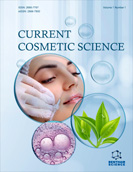
Full text loading...
We use cookies to track usage and preferences.I Understand
The human skin is a multi‐layered material consisting of three layers: the epidermis, dermis, and subcutis. The epidermis is the dominant structure that affects the properties of the skin, such as tensile strength and stiffness. The skin regulates body temperature, provides insulation, and protects inner organs. Skin structure has a substantial influence on skin biomechanics. For instance, anisotropy is a result of the alignment of elastin and collagen fibers in the dermis that compels the skin to exhibit greater tension in one direction, making it appear stiffer. The mechanical properties (such as stiffness, extensibility, and strength) of this organ are important from the clinical, cosmetic, and biomechanical standpoints. A fundamental understanding of skin mechanics is important for the development of useful products for cosmetology. As an illustration, changes in the mechanical properties of the skin can shed light on the efficacy of cosmeceutical formulations. In this review, we will highlight skin structure and then discuss the biomechanics of this important organ.

Article metrics loading...

Full text loading...
References


